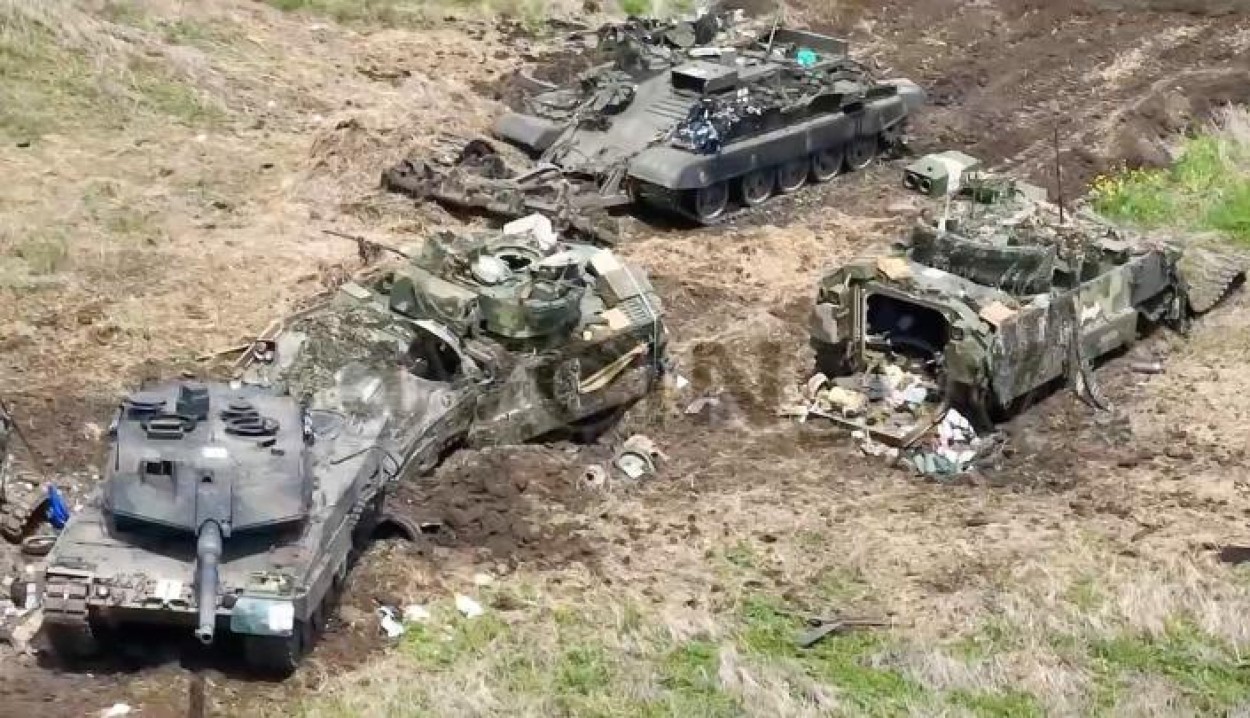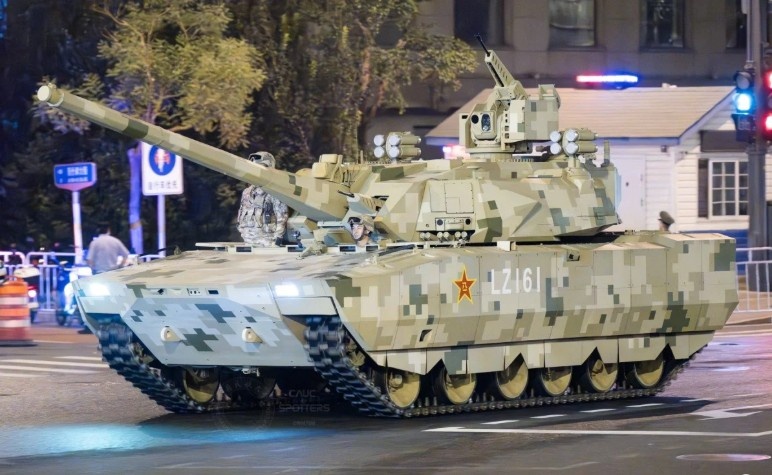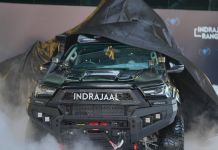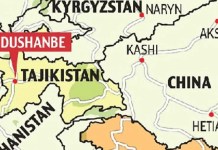The Ukraine War has proved to be a “graveyard” for tanks. From Soviet-era vintage tanks, such as the T-72 and T-80, to West-supplied modern tanks like the Leopard 2 and Challenger 2, and even US-supplied Abrams, all have proven equally vulnerable to cheap drones.
To such an extent that many defense commentators have already begun writing obituaries for tanks, suggesting that the era of tank dominance in modern wars is coming to an end.
Paul Scharre, a former US Army Ranger and director of studies at the Center for a New American Security, has suggested that the role of tanks is diminishing due to lessons from the Ukraine war: “Tanks are going to move, over time, into more of a mopping-up role.”
In the Ukraine War, cheap drones armed with explosives, each costing less than US$500 apiece, have been able to take out a US$10 million Abrams tank.
Known as first-person view drones, or FPVs, they are equipped with a camera that streams real-time images back to their controller, who can direct them to hit tanks in their most vulnerable spots.
To be sure, drones are not the only challenge facing modern tanks. They are also becoming increasingly vulnerable to shoulder-fired anti-tank missiles. And not just the sophisticated Javelins, but also anti-tank missiles such as Stugna-P, a rudimentary anti-tank warhead made by Ukraine.
Edward Luttwak, a renowned military strategist, highlighted the vulnerability of tanks against empowered infantry in the context of Ukraine: “An infantry that is determined to fight is now super-empowered by having things like a huge number of point-and-shoot disposable anti-tank rockets.”

The war in Ukraine has also shown how cheap and disposable weapons, better known as next-generation light anti-tank weapons (NLAW), are highly effective in taking tanks out of action. NLAWs are proving their flexibility in attacking from almost any position, “from up high in a building to behind a tree or in a ditch.”
Reportedly, the Ukrainian army has attacked Russian tanks on motorcycles, buggies, and golf carts or unarmored Ural trucks encased in anti-drone cages.
According to open-source analysts with the Oryx intelligence collective, Russia has lost around 3,800 tanks – destroyed, damaged, abandoned, or captured – in the Ukraine War. While Kyiv has also lost approximately 1,100 tanks, Business Insider reported in May of this year.
However, drones or NLAWs are not the first challenge that tanks have faced, nor will they be the last. For as long as tanks have transformed the modern battlefield, marking their first appearance on the Battle of the Somme in 1916 during World War I, countries have invested in counter-tank warfare, from land mines and improvised explosive devices to rocket-propelled grenades and anti-tank guided missiles.
However, tanks have adapted in the past, and will adapt to drone warfare as well. In fact, many countries have already started integrating counter-drone warfare systems into their new tank models.
China is also set to unveil a new-generation, lighter tank during next month’s military parade, designed to better survive drone strikes.
China’s New Generation Medium-Weight Tank
A new Chinese tank has been spotted on the streets of Beijing ahead of next month’s military parade on September 3, marking the 80th anniversary of China’s victory over Japan in World War II.
The vehicle appears to be a medium-weight tank, lighter than the third-generation Type 99A main battle tank (MBT), and is equipped with advanced active protection systems, according to photos and videos circulating online in recent weeks, as reported by the South China Morning Post (SCMP).
Apart from the main barrel gun, the tank also features an anti-drone weapon on the top. Its main armament appears to be a 105mm gun, in contrast to the Type 99A’s 125mm weapon.

The tank features the GL6 active protection system (APS) and a quad-faced phased array radar that provides 360-degree threat detection, according to Chinese military analyst Fu Qianshao.
“The system can continuously monitor the surrounding environment, automatically deploy countermeasures and intercept incoming missiles, rockets and drones, significantly enhancing survivability,” he said.
Drone Integration With MBTs
Another notable feature is that, apart from the anti-drone warfare system, the tank is also equipped with its own drone system for wide-area reconnaissance, extending battlefield situational awareness and providing its crew with more comprehensive intelligence support.
In combat aviation, several countries are moving towards manned-unmanned teaming (MUT); however, this is perhaps the first attempt to integrate drone systems with a tank.
The drone integration marks a crucial addition to a tank’s capabilities, extending its reconnaissance and combat range, and enabling it to function as an “information hub” rather than a standalone platform. The integration will enable tanks to meet the demands of future networked warfare.
Unmanned Turret & Hybrid Propulsion
According to Chinese analysts, the tank could feature an unmanned turret. An unmanned turret is a significant technological leap.
Separating the crew from the turret and ammunition in an armored capsule significantly increases crew protection from threats and attacks.
Incidentally, Russia is also working on an unmanned turret tank concept, the T-14 Armata. However, the T-14 Armata is yet to enter large-scale production.
Currently, there is no information available on whether the new Chinese tank has entered mass production. However, given China’s massive industrial production capacity, it can be safely assumed that Beijing could quickly produce hundreds of units of this new tank whenever it enters serial production.
Apart from an unmanned turret, Fu noted, the new tank could also feature a hybrid propulsion system, which would reduce its acoustic signature and increase its mobility in complex terrain.
Fu said that the appearance of this new generation tank could also suggest the gradual phasing out of the older People’s Liberation Army (PLA) tank models, such as Type 96 and Type 99.
“The design of next-generation Chinese tanks – with active protection systems, hybrid power and modular design – demonstrates the core requirements of future land warfare: survivability, informatisation and multifunctionality.
“These innovations not only enhance the offensive and defensive capabilities of future MBTs but also open a new landscape for informationised land battlefields,” Fu added.
Laser Guns To Cope Cages; How Are Tanks Adapting To Drone Warfare
Not just China, many countries are adapting tanks to the modern battlefield challenges of drones and anti-tank missiles.
Reports suggest that Ukraine’s U.S.-supplied M1A1 Abrams tanks are getting new production-standard anti-drone armor screens on their turrets and additional explosive reactive armor (ERA) modifications.

Russia, too, has improved its T-72 tanks with new types of armor called “super cage armor.” These include improvised metal roofs layered with metal grills. Ukrainian social media channels have nicknamed these vehicles “turtle tanks,” while Russian media accounts have referred to them as “Tsar Mangal,” “Tsar’s BBQs,” or “the conqueror of Krasnohorivka.”
The purpose of these countermeasures is to detonate the drones’ explosive charges prematurely, thereby decreasing the likelihood of projectiles from the drones penetrating the hull.
These adaptations suggest that despite losing thousands of tanks, neither Ukraine nor Russia is prepared to abandon tanks completely from their battlefield strategy.
According to Viktor Murakhovsky, a retired Russian veteran, “High-intensity combat operations between technologically comparable countries are unimaginable without the large-scale use of tanks,” given the tank’s firepower, mobility, survivability, endurance, and cost-effectiveness.
This suggests that it would be a mistake to write off tanks as obsolete. In fact, many countries are investing in designing and developing fourth-generation tanks, which will have advanced protection against drone and missile threats.
Russia is developing its fourth-generation main battle tanks, the T-95 and T-14 Armata. The US is working on its AbramsX prototype. It is also developing the M10 Booker with countermeasures for protecting tanks against one-way attack drones.
The U.K. is planning to replace its Challenger 2 tanks with upgraded Challenger 3 models. Germany is also working on the Leopard 3, a successor to its popular Leopard 2.
These tanks will feature stealthier designs and be equipped with advanced electronic and digital countermeasures, as well as powerful radars to detect incoming projectiles and automatically engage and destroy them. Additionally, they will be equipped with their own drone systems to enhance their reconnaissance and combat capabilities.
- Sumit Ahlawat has over a decade of experience in news media. He has worked with Press Trust of India, Times Now, Zee News, Economic Times, and Microsoft News. He holds a Master’s Degree in International Media and Modern History from the University of Sheffield, UK.
- VIEWS PERSONAL OF THE AUTHOR.
- He can be reached at ahlawat.sumit85 (at) gmail.com




